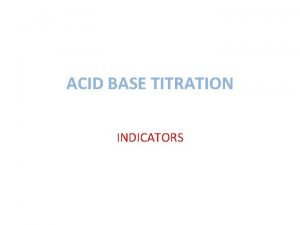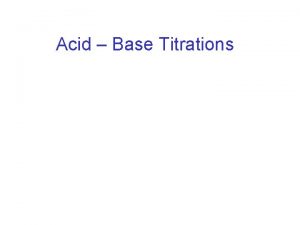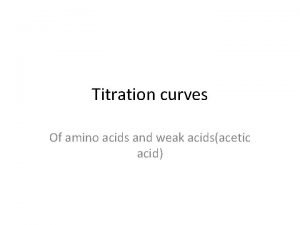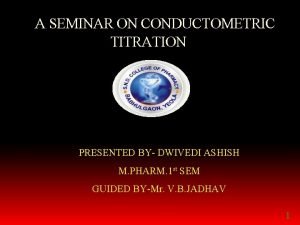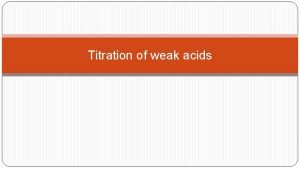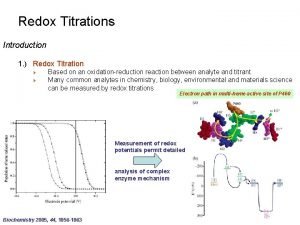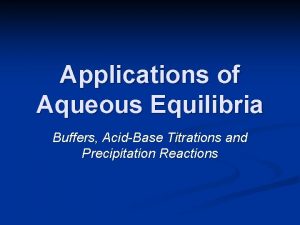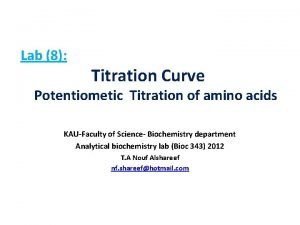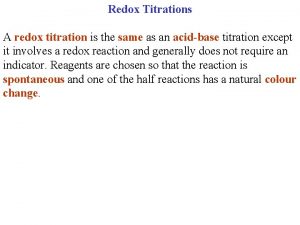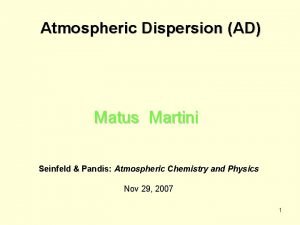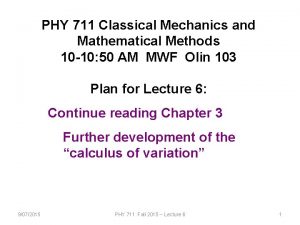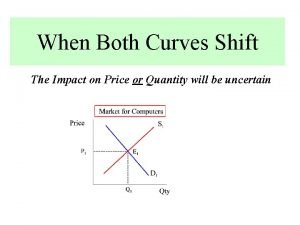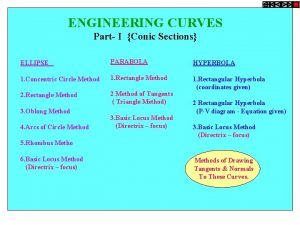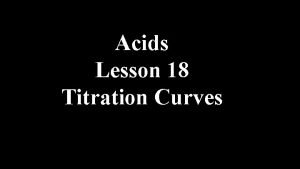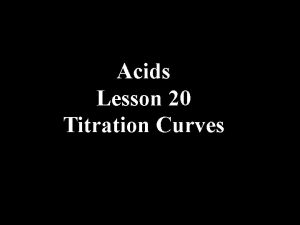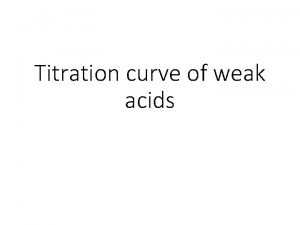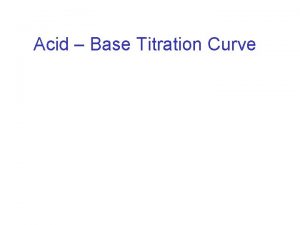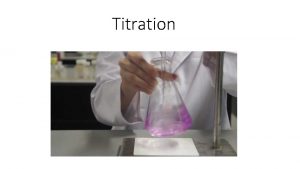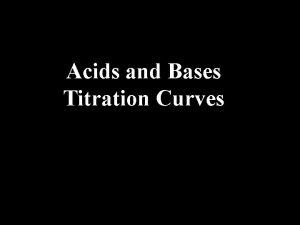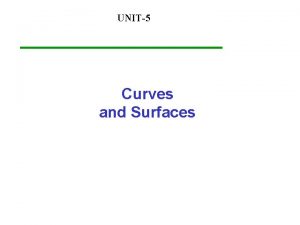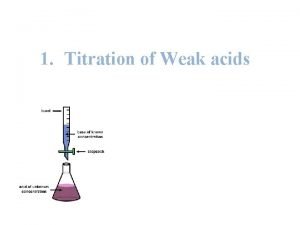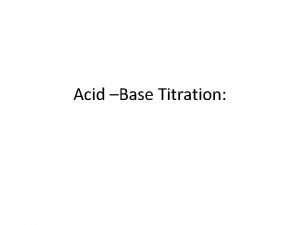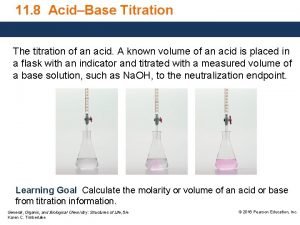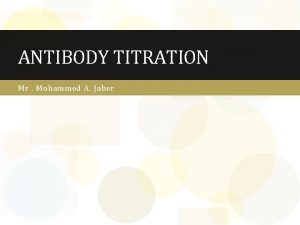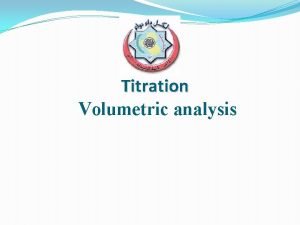Titration p H curves 17 3 Titration A
![Titration & p. H curves [17. 3] Titration & p. H curves [17. 3]](https://slidetodoc.com/presentation_image_h2/6368bdc2f3dd93f3547aa73e97942e08/image-1.jpg)









![� 1. 8 x 10 -5 = x 2 0. 200 x = [H+] � 1. 8 x 10 -5 = x 2 0. 200 x = [H+]](https://slidetodoc.com/presentation_image_h2/6368bdc2f3dd93f3547aa73e97942e08/image-11.jpg)










- Slides: 21
![Titration p H curves 17 3 Titration & p. H curves [17. 3]](https://slidetodoc.com/presentation_image_h2/6368bdc2f3dd93f3547aa73e97942e08/image-1.jpg)
Titration & p. H curves [17. 3]

Titration A known concentration of base (or acid) is slowly added to a solution of acid (or base).

Titration A p. H meter or indicators are used to determine when the solution has reached the equivalence point, at which the stoichiometric amount of acid equals that of base.

Titration of a Strong Acid with a Strong Base From the start of the titration to near the equivalence point, the p. H goes up slowly.

Titration of a Strong Acid with a Strong Base Just before and after the equivalence point, the p. H increases rapidly. At the equivalence point, moles acid = moles base, and the solution contains only water and the salt from the cation of the base and the anion of the acid.

Titration of a Strong Acid with a Strong Base As more base is added, the increase in p. H again levels off.

Titration of a Weak Acid with a Strong Base Unlike in the previous case, the conjugate base of the acid affects the p. H when it is formed. The p. H at the equivalence point will be >7. Phenolphthalein is commonly used as an indicator in these titrations.

Titration of a Weak Acid with a Strong Base At each point below the equivalence point, the p. H of the solution during titration is determined from the amounts of the acid and its conjugate base present at that particular time.

Zumdahl #59 Titration Problem Solving

1. Stoichiometry problems; then 2. equilibrium problems to find p. H Consider titration of 100. 0 m. L of 0. 200 M acetic acid (Ka = 1. 8 x 10 -5) by 0. 100 M KOH. Calculate p. H after KOH has been added: a. 0. 0 m. L b. 50. 0 m. L c. 100. 0 m. L d. 150. 0 m. L e. 200. 0 m. L f. 250. 0 m. L Only a weak acid is present… HC 2. 200 M H 3 O 2 ↔ ≈ 0 H + + I 0 C -x +x +x E 0. 200 –x x x C 2 H 3 O 2 -
![1 8 x 10 5 x 2 0 200 x H � 1. 8 x 10 -5 = x 2 0. 200 x = [H+]](https://slidetodoc.com/presentation_image_h2/6368bdc2f3dd93f3547aa73e97942e08/image-11.jpg)
� 1. 8 x 10 -5 = x 2 0. 200 x = [H+] = 1. 9 x 10 -3 M p. H = 2. 72 b. Added OH- will react completely with the best acid present: HC 2 H 3 O 2 + OH↔ C 2 H 3 O 2 - + H 2 O I . 200 M x. 1000 L = o. 0200 moles 0. 100 M x 0. 050 L = 0. 00500 moles 0 C -0. 00500 +0. 00500 E 0. 0150 mols 0 0. 00500 mols ----

�After reaction we have a buffer solution � p. H = -log (1. 8 x 10 -5) + log (0. 00500/0. 150 L) (0. 0150 /0. 150 L) p. H = 4. 74 + (-0. 477) = 4. 26 c. HC 2 H 3 O 2 + OH↔ C 2 H 3 O 2 - + H 2 O I 0. 200 M x 0. 1000 L = 0. 0200 mols 0. 100 M x 0. 1000 L = 0. 0100 moles 0 C -0. 0100 +0. 0100 E 0. 0100 mols 0 0. 0100 mols p. H = -log (1. 8 x 10 -5) + log (0. 0100/0. 200 L) (0. 0100 /0. 200 L) p. H = 4. 74

d. HC 2 H 3 O 2 + OH- ↔ C 2 H 3 O 2 - + H 2 O I 0. 02000 0. 100 M x 0. 150 L = 0. 0150 mols 0 C -0. 0150 +0. 0150 E 0. 0050 0 0. 0150 p. H = 4. 74 + log (0. 0150/0. 0050) = 5. 22

�HC 2 H 3 O 2 + OH- ↔ C 2 H 3 O 2 - + H 2 O I 0. 0200 0. 100 M x 0. 200 L = 0. 0200 0 C -0. 0200 +0. 0200 E 0 0 0. 0200 mols **equivalence point Moles of acid = moles of base p. H determined by conjugate base Kb = Kw/Ka Kb = 5. 6 x 10 -10

�C 2 H 3 O 2 - + H 2 O ↔ HC 2 H 3 O 2 + OH- I 0. 0200/0. 300 L 0 = 0. 0667 M 0 C -x +x +x E 0. 0667 -x x x � 5. 6 x 10 -10 = x 2 0. 0667 X= [OH-] = 6. 1 x 10 -6 M p. OH = 5. 21; p. H = 8. 79

�HC 2 H 3 O 2 + OH- ↔ C 2 H 3 O 2 - + H 2 O I 0. 0200 0. 0250 0 C -0. 0200 +0. 0200 E 0 0. 0050 0. 0200 LR Excess reactant [OH-] = 0. 0050/0. 350 L = 0. 014 M p. OH = 1. 85 p. H = 12. 15 Since [OH-] is strong, p. H is determined by excess, conjugate base effect is negligible

Titration of a Weak Acid with a Strong Base With weaker acids, the initial p. H is higher and p. H changes near the equivalence point are more subtle.

Titration of a Weak Base with a Strong Acid The p. H at the equivalence point in these titrations is < 7. Methyl red is the indicator of choice.

Buffer exists at ½ way titration point p. H is stable Buffer @ p. Ka value Buffers

Weak vs. strong Buffer @ ½ way titration Equivalence point

Titrations of Polyprotic Acids In these cases there is an equivalence point for each dissociation. Also buffering at each ½ titration point.
 Strong acid titration curve
Strong acid titration curve Acid base titration curves
Acid base titration curves Titration curve of arginine
Titration curve of arginine Advantages of conductometric titration
Advantages of conductometric titration Titration curve of glycine
Titration curve of glycine Define redox titration
Define redox titration Why do titration curves flatten out
Why do titration curves flatten out Pi of alanine
Pi of alanine Why do titration curves flatten out
Why do titration curves flatten out Precipitation titration
Precipitation titration Define redox titration
Define redox titration Titration vs back titration
Titration vs back titration Slutsky vs hicks
Slutsky vs hicks Dangerous curves the zoo
Dangerous curves the zoo Hermite curve in computer graphics
Hermite curve in computer graphics Fusion chemistry phase change
Fusion chemistry phase change Nelson curve hydrogen
Nelson curve hydrogen Seinfeld
Seinfeld Brachistochrone
Brachistochrone Drivers ed module 5 topic 1
Drivers ed module 5 topic 1 When both curves shift
When both curves shift How to draw tangent and normal to cycloid
How to draw tangent and normal to cycloid
